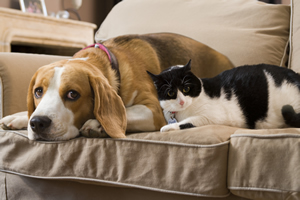News
Archive for January, 2013
Pet Smile Month
by on January 4th, 2013
Category: Special Offers, Tags:
Pet of the Month
by on January 4th, 2013
Category: Pet of the Month, Tags:
 We start the New Year’s Pet Of The Month with a 10-year-old Lurcher called Lolli. She was brought into our clinic as a stray 9 years ago when she was about 8 months old. Nobody ever came forward for Lolli so one of our staff decided to take her on and give her a loving home.
We start the New Year’s Pet Of The Month with a 10-year-old Lurcher called Lolli. She was brought into our clinic as a stray 9 years ago when she was about 8 months old. Nobody ever came forward for Lolli so one of our staff decided to take her on and give her a loving home.
Lolli has always been a very active happy dog with a beautiful nature, however for the last four years she has been on anti-inflammatory drugs for arthritis. About a year ago Lolli suddenly deteriorated. Her owner thought it seemed to worsen after she attempted to dive down a rabbit hole. Lolli was very lame and very sad. Alongside rest Lolly was tried on a variety of different drugs to try and give her some relief from her obvious pain. Nothing seemed to work.
Further investigations revealed advanced destructive joint disease. Lolli’s quality of life was seriously compromised – she was just not a happy dog anymore. After much soul-searching it was decided that the only option left that would give some hope of restoring Lolli’s quality of life would be to have her leg amputated.
This proved to be the right decision as when her leg was removed it was found that her joint had disintegrated from the terrible arthritis. Lolli recovered well. She was taken to the park every day where she would walk just a few steps. It is just as important for a dog’s emotional welfare to give them some fresh air and a change of scenery as it is for us humans. Lolli’s owner felt this helped stop her becoming depressed.
We are pleased to report that Lolli is now a different dog! She loves having a roly-poly and can go for short distance walks. She is so much happier and cheekier and is even more sociable with other canines she meets when out and about (she could be a bit of a snappy monkey beforehand if other dogs got too close to her). All of this is proof that the decision to amputate Lolli’s leg was the right choice for her.
Thyroid disease – is your pet affected?
by on January 4th, 2013
Category: News, Tags:
 Most of us have heard of the thyroid gland, but did you know that thyroid problems are surprisingly common in pets?
Most of us have heard of the thyroid gland, but did you know that thyroid problems are surprisingly common in pets?
The thyroid gland which consists of two lobes, located on either side of the trachea (windpipe) in the neck, produces thyroid hormone which regulates your pet’s metabolic rate. Too much thyroid hormone speeds up the body’s metabolism, whilst too little slows it down.
Hyperthyroidism in cats
Over production of thyroid hormone is called hyper-thyroidism and is a relatively common condition in cats over eight years of age. In the majority of cases this is caused by benign (non-cancerous) enlargement of one or both thyroid lobes. Hyperthyroid cats typically have an increased appetite, but despite this show signs of weight loss, and often become quite unkempt in appearance. In addition, excess thyroid hormone usually increases the heart rate, frequently causing cardiac problems. As well as the above, a variety of other signs may be seen including hyperactivity, vomiting and diarrhoea. However the good news is that in the majority of cases, hyperthyroidism can be successfully treated. If you are concerned your cat may be hyperthyroid, come and see us for a check-up.
Hypothyroidism in dogs
Under production of thyroid hormone is called hypothyroidism, and is a relatively common condition in the older dog. Lowered production of thyroid hormone leads to a decrease in the metabolic rate, usually leading to weight gain (with no increased appetite) and generalised lethargy. Other signs often include coat problems, and recurrent skin and ear infections. Diagnosis of hypothyroidism can be tricky, but in confirmed cases, daily treatment with oral thyroid supplements will be very successful in treating this condition.
As you can see, thyroid conditions are relatively common in pets, but the really good news is that with an appropriate diagnosis, both conditions are very treatable. Please don’t hesitate to contact us if you are concerned that your pet is showing any of the signs described above.


